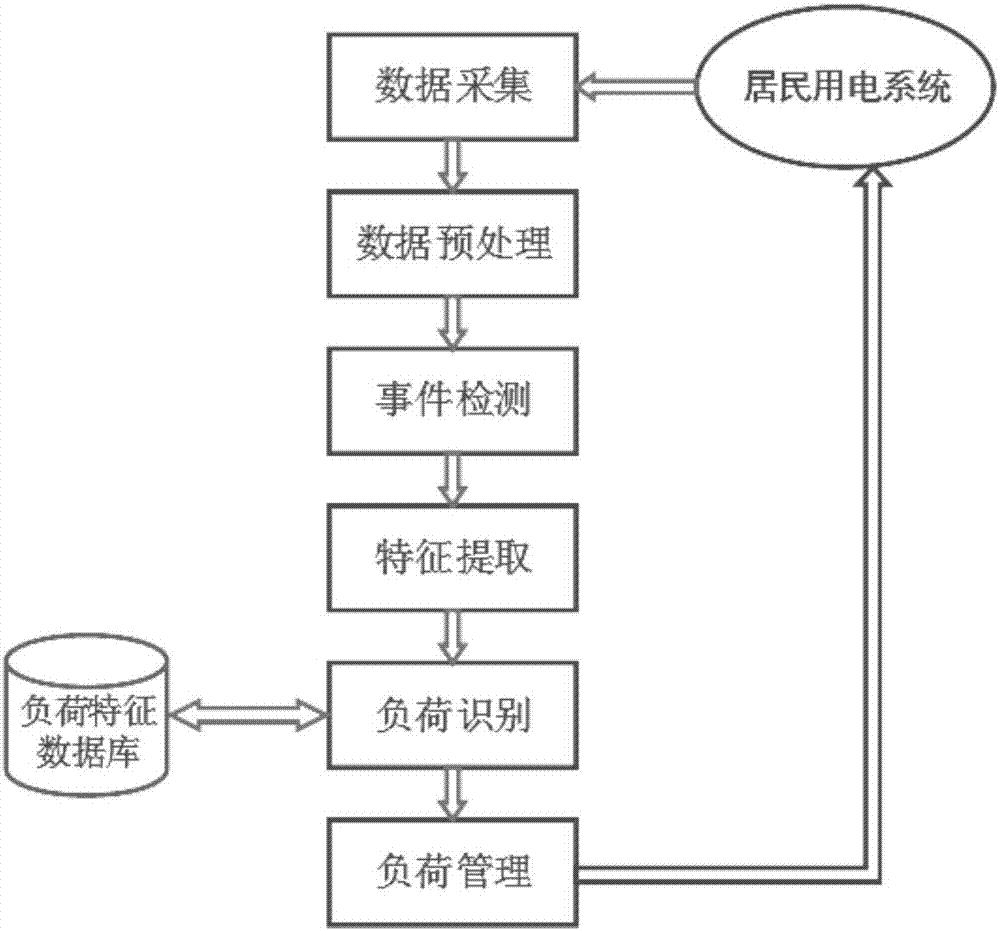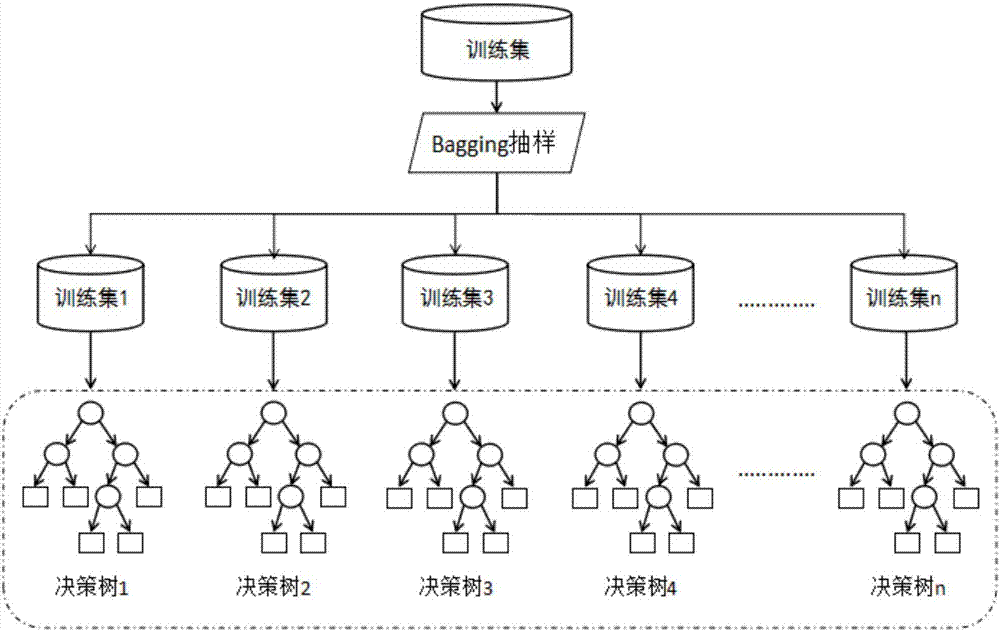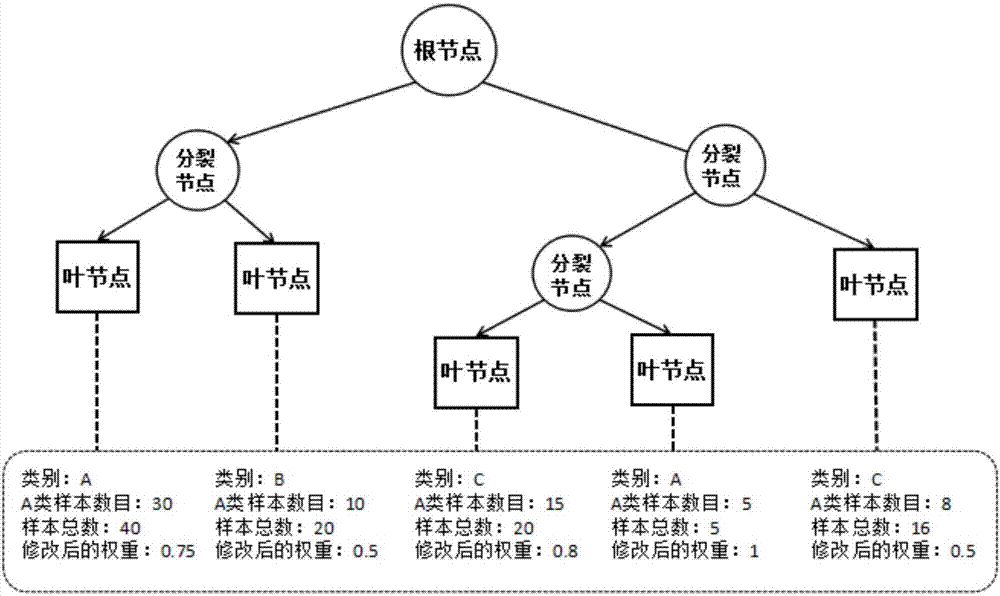Random forest-based non-invasive home appliance identification method
A technology for household appliances and random forests, which is applied in character and pattern recognition, instruments, and measurement of electrical variables, etc., can solve the problems that installation work needs to enter the interior of the appliance, affect production work, and is not suitable for promotion, so as to overcome overfitting and Data set imbalance problem, good robustness, and the effect of fast recognition
- Summary
- Abstract
- Description
- Claims
- Application Information
AI Technical Summary
Problems solved by technology
Method used
Image
Examples
Embodiment Construction
[0061] The present invention will be further explained below in conjunction with specific embodiments and accompanying drawings.
[0062] see figure 1 , the present invention comprises the following steps:
[0063] 1) Establish a load characteristic database, which stores a variety of load characteristics of various household appliances: each appliance in the characteristic database stores a set of multidimensional data, mainly including the steady-state characteristics, transient characteristics and operating mode characteristics of the electrical appliances. kind;
[0064] 2) Use the load feature stored in the feature database as the original training set, and generate N training subsets from the original training set through Bagging sampling technology;
[0065] 3) Perform recursive analysis on each training subset to generate a decision tree: the generated decision tree is an inverted tree structure. The decision tree takes the training subset as the root node, adopts a...
PUM
 Login to View More
Login to View More Abstract
Description
Claims
Application Information
 Login to View More
Login to View More - R&D
- Intellectual Property
- Life Sciences
- Materials
- Tech Scout
- Unparalleled Data Quality
- Higher Quality Content
- 60% Fewer Hallucinations
Browse by: Latest US Patents, China's latest patents, Technical Efficacy Thesaurus, Application Domain, Technology Topic, Popular Technical Reports.
© 2025 PatSnap. All rights reserved.Legal|Privacy policy|Modern Slavery Act Transparency Statement|Sitemap|About US| Contact US: help@patsnap.com



